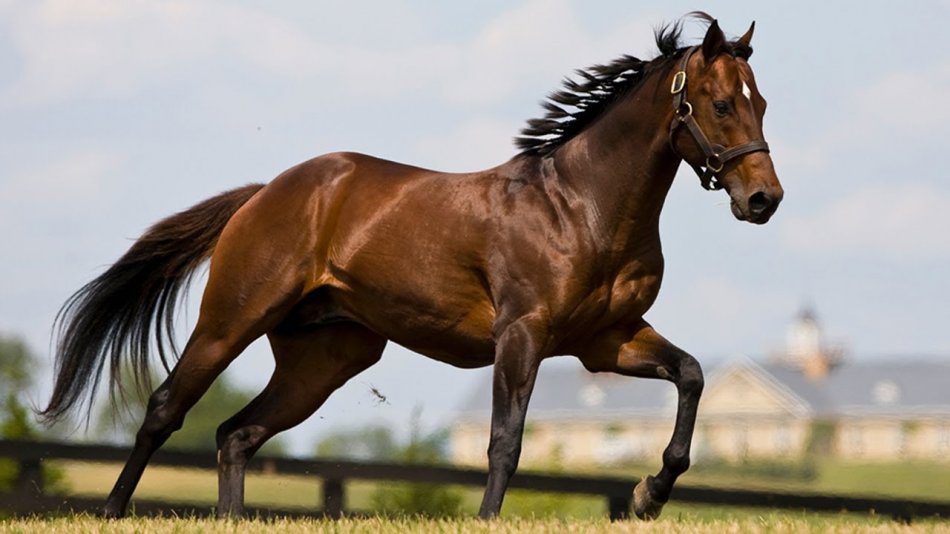
Hanoverian
The Hanoverian is the most numerous half-bred horse breed in the world. The Hanoverian horse was bred in Celle (Germany) in the 18th century with the aim of “glorifying the state.” Hanoverian horses in the world are recognized by their characteristic brand – the letter “H”.
Contents
History of the Hanoverian horse
Hanoverian horses appeared in Germany in the 18th century.
For the first time, Hanoverian horses are mentioned in connection with the Battle of Poitiers, where a victory was won over the Saracens. The Hanoverian horses of that time were heavy military horses, probably the result of crossing local horses with oriental and Spanish breeds.
In the same 18th century, the Hanoverian horses changed. During this period, George I of the House of Hanover became King of Great Britain, and thanks to him, Hanoverian horses were brought to England and German mares began to be crossed with thoroughbred riding stallions.
George I, moreover, became the founder of the state stud farm in Celle (Lower Saxony), where large horses were bred for riding and carriages, as well as for agricultural work. And the Hanoverian horses were improved by infusing the blood of Trakehner horses, and they also continued to cross them with thoroughbred riding horses.
The result of these efforts was the foundation in 1888 of a studbook of the Hanoverian breed of horses. And the Hanoverian horses themselves have become the most famous half-breed breed that has proven itself in sports.
Now Hanoverian horses are bred clean. Moreover, manufacturers are tested not only for endurance, performance and exterior, but also for character.
Hanoverian horses have been used to improve other breeds of horses such as the Brandenburg, Macklenburg and Westphalian.
Today, the most famous Hanoverian stud farm is still located in Celle. However, Hanoverian horses are bred all over the world, including in South and North America, Australia and Belarus (stud farm in Polochany).

In the photo: a black Hanoverian horse. Photo: tasracing.com.au
Description of the Hanoverian horses
Many believe that the exterior of the Hanoverian horse is close to ideal. Hanoverian horses look very similar to thoroughbred riding horses.
The body of the Hanoverian horse should not form a square, but a rectangle.
The neck is muscular, long, has a graceful bend.
The chest is deep and well formed.
The back is of medium length, the loin of the Hanoverian horse is muscular, and the thighs are powerful.
Legs with large joints, strong, hooves have the correct shape.
The head of the Hanoverian horse is medium in size, the profile is straight, the look is lively.
The height at the withers of the Hanoverian horse is from 154 to 168 cm, however, there are Hanoverian horses with a height of 175 cm.
Suits of Hanoverian horses can be any one color (black, red, bay, etc.). In addition, white marks are often found in Hanoverian horses.
The movements of the Hanoverian horse are beautiful and free, thanks to which representatives of the breed often win dressage competitions.
Since the character of the sires is being tested, only well-balanced horses are allowed to be bred. So the character of the Hanoverian horse has not deteriorated: they are still calm, balanced and happy to cooperate with a person.

In the photo: a Hanoverian bay horse. Photo: google.ru
The use of Hanoverian horses
Hanoverian horses are the most popular sport horses in the world. Most international dressage and show jumping competitions are not complete without representatives of the breed. Hanoverian horses also compete in triathlon.

In the photo: a gray Hanoverian horse. Photo: petguide.com
Famous Hanoverian horses
The first glory “overtook” the Hanoverian horses in 1913 – a mare named Pepita won a prize of 9000 marks.
In 1928, the Hanoverian horse Draufanger received Olympic gold in dressage.
However, the most famous Hanoverian stallion is probably Gigolo, Isabelle Werth’s horse. Gigolo repeatedly won prizes at the Olympics, became the European Champion. At 17, Gigolo retired and lived until the age of 26.

In the photo: Isabelle Werth and the famous horse Gigolo. Photo: schindlhof.at
Read also:





